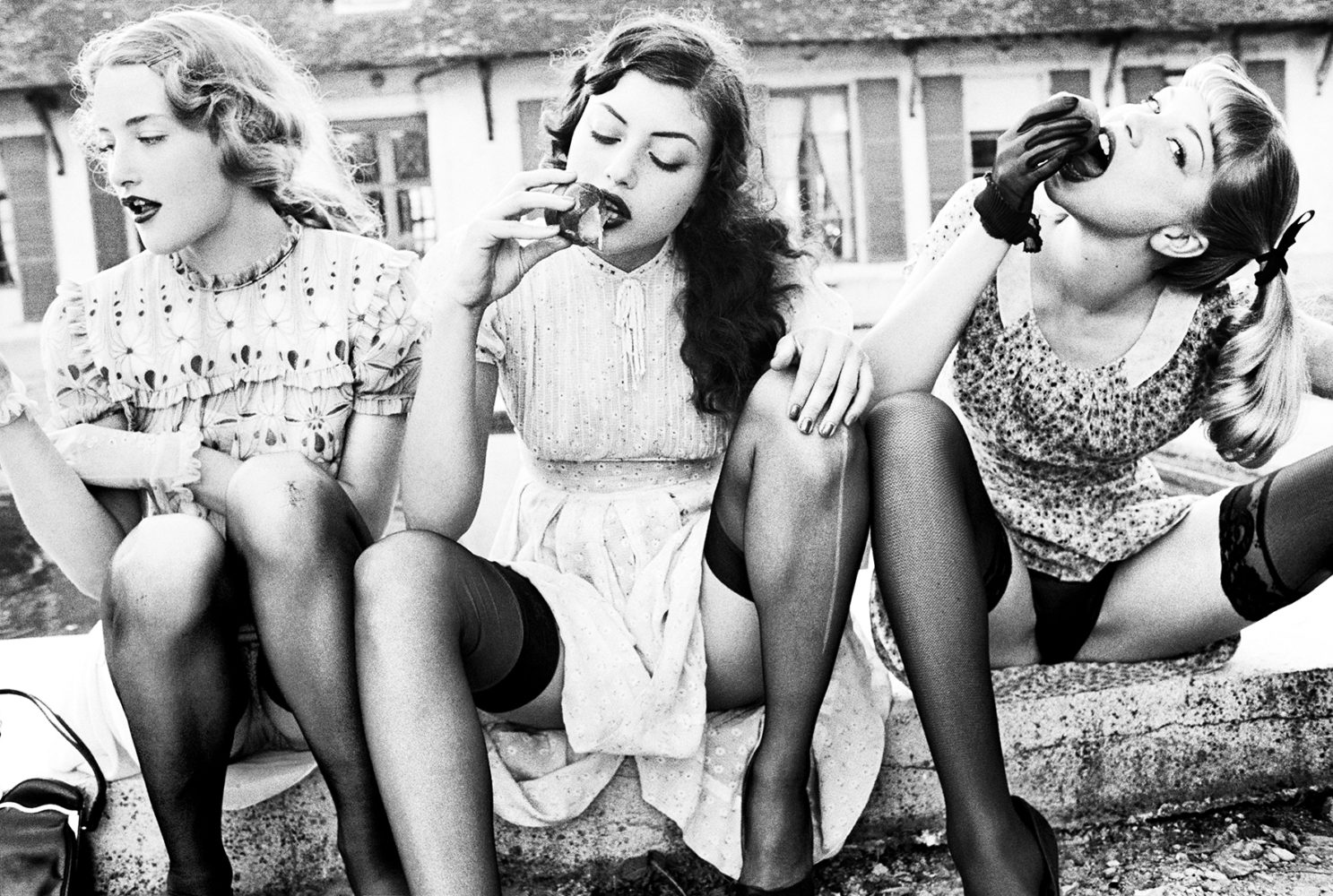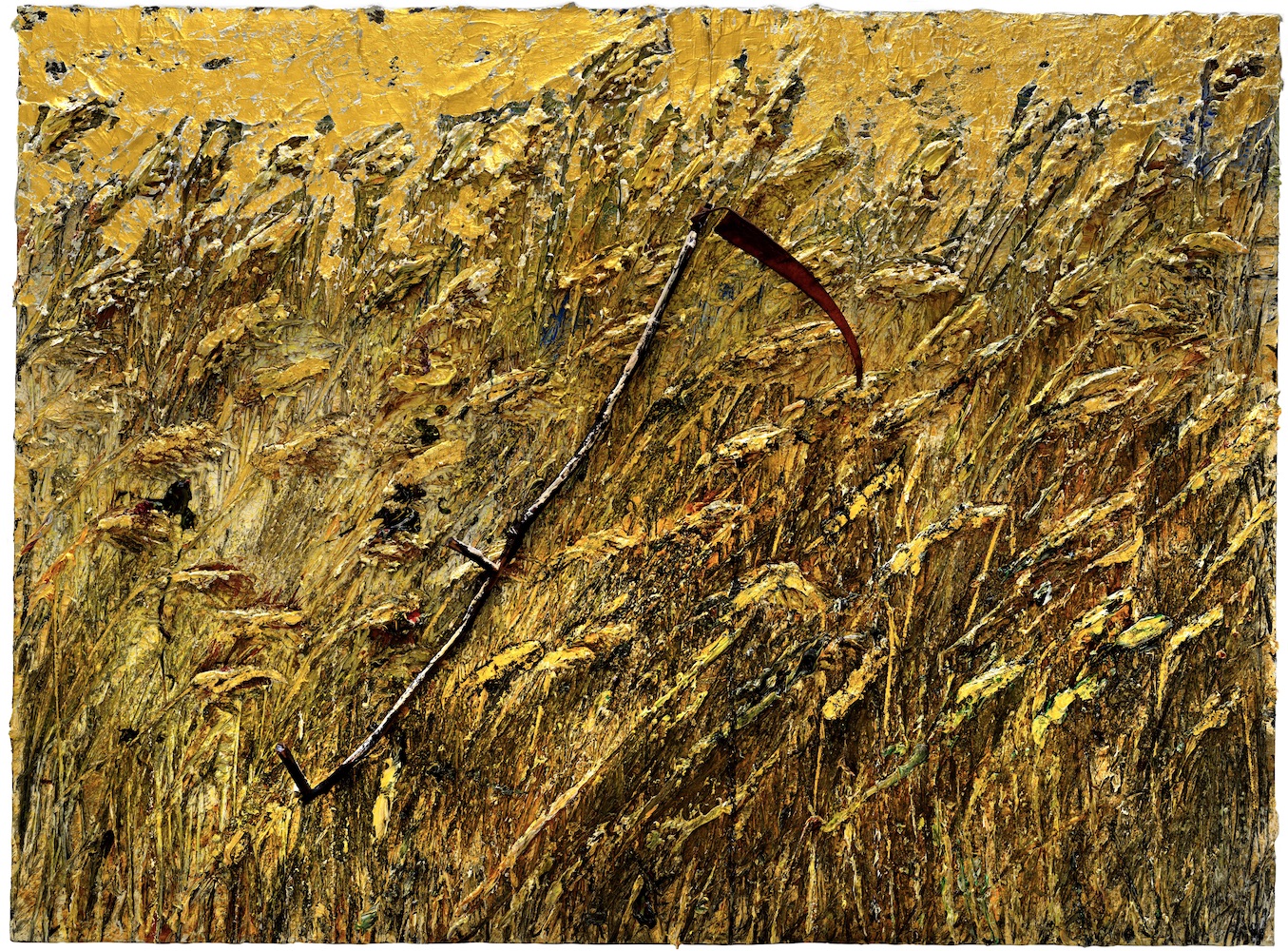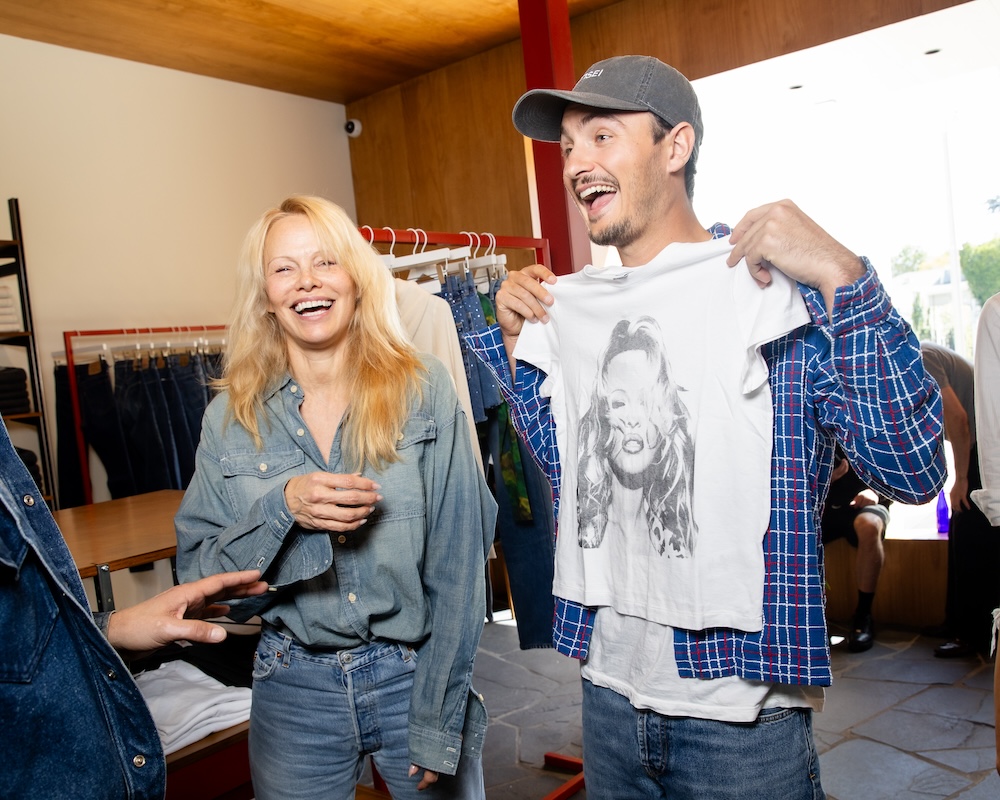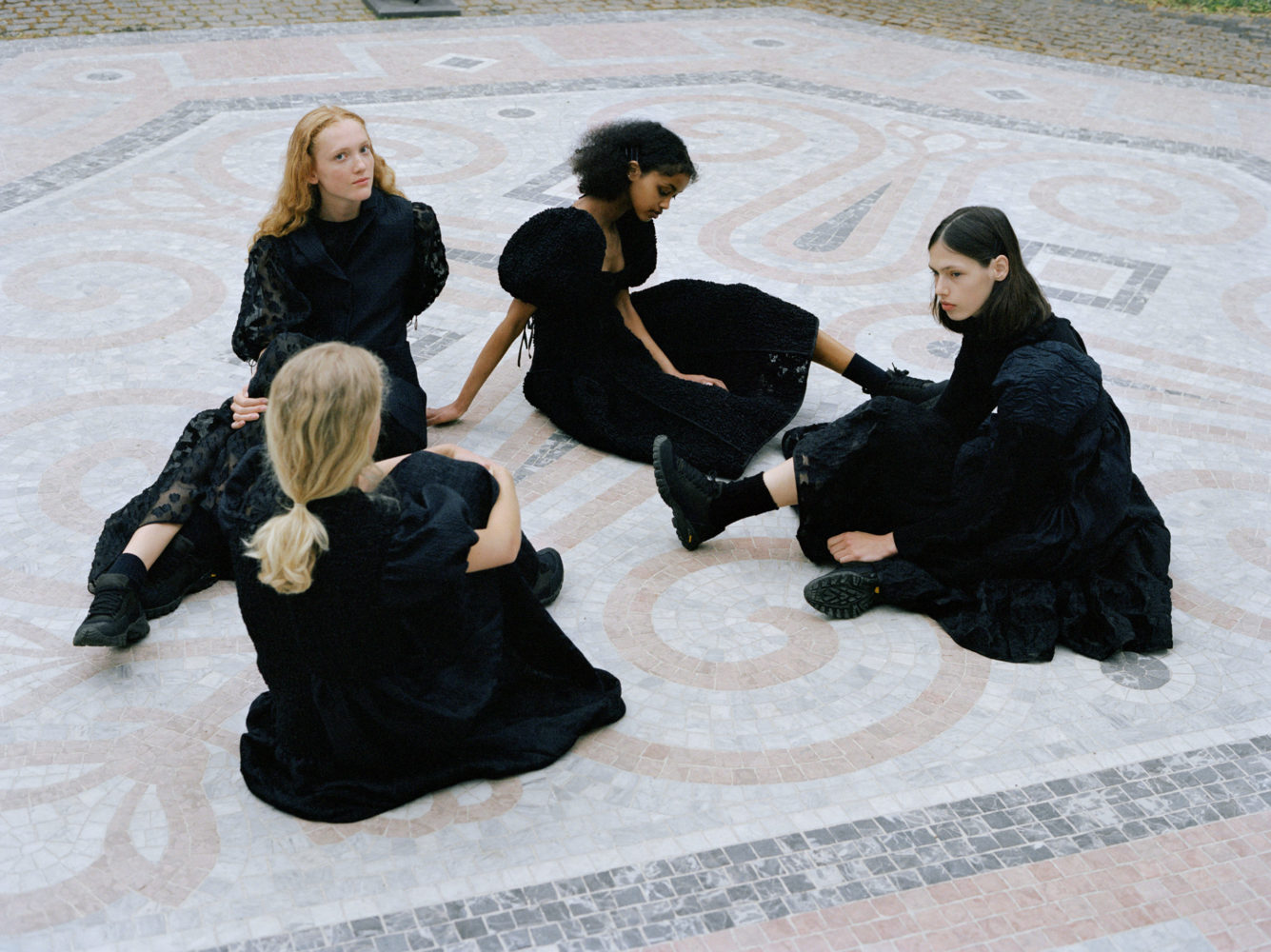Ellen von Unwerth’s life in photography is a multifaceted story of passion, perception, and theatrics. She spent her early years in Frankfurt and in Munich, and after high school, she attended an unlikely event that changed her idea of curiosity and beauty—a circus. It was there, wedged between knife-throwers and magicians, that she found a job as an assistant for the next three years. Experiencing a mix of the glitz, the magic, and the dust gave her an appreciation for the weird and wonderful beauty she captures in photos and film today.
At 20 years old, she then pursued a career in modeling. After being scouted by John Casablancas, she moved to Paris, subsequently traveling the world for the next decade. While her time as a model wound down, she picked up a camera in Kenya, and the rest is living history.
Whitewall spoke with von Unwerth about her early days in showbiz, her latest exhibition, “Devotion!” at Fotografiska, and what she hopes her photography will be known for.
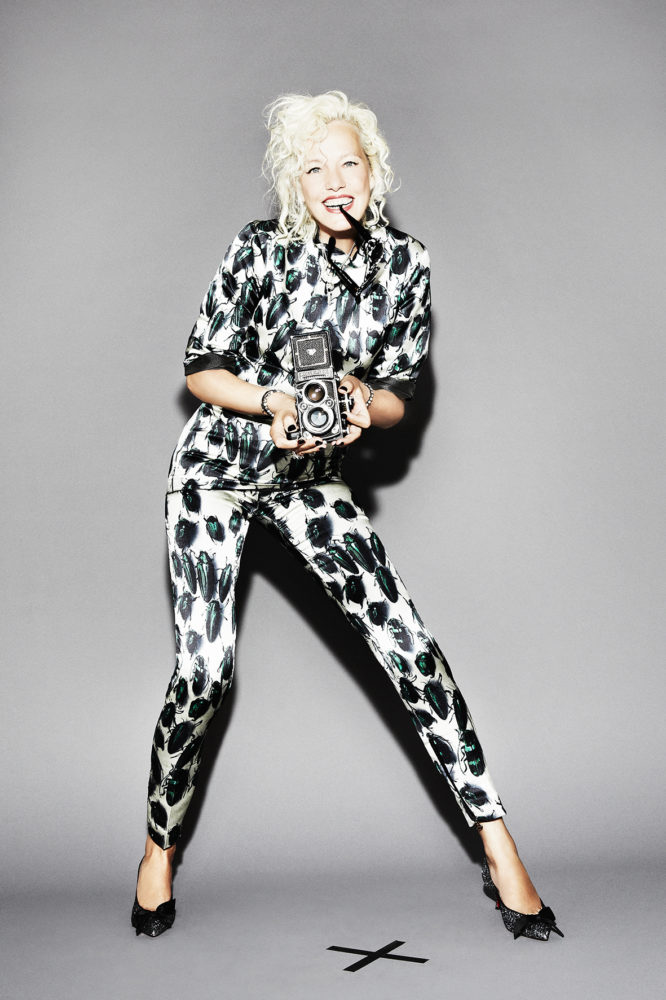
Ellen von Unwerth, Ellen by Ellen, London, 2013, courtesy of Ellen von Unwerth.
WHITEWALL: How on earth did you end up in the circus?
ELLEN VON UNWERTH: I was the assistant to the clown and the knife-thrower at Circus Roncalli in Munich. It was a really fun time! It was a great circus by André Heller and Bernhard Paul. Bernhard was this amazing director of really beautiful shows, and he took over the show during this time, so it was very romantic and poetic. It was a big, big thing. I saw it, and I went to the director and said, “I want to be in your circus.” He looked at me and said, “You can start tomorrow. You look like a circus girl.” That was the beginning.
WW: After working at the circus and modeling for about ten years, you traveled to Kenya with a model friend and colleague and took photos of her that ended up in a magazine. Do you consider these photos to be the first of yours as a photographer?
EVU: Yes, this was my first set of pictures that came out in Jill magazine. I shot people in the street, in villages, on the beach. It was a very trendy magazine at the time, which friends of mine were in. So, when they saw the pictures, they were very surprised, like, “Ellen, did you do this?” Everybody was really surprised because they thought models were stupid. Maybe a little less now, but at the time, everyone was really surprised I was able to do these pictures. It was also documentary-style, which is what I kind of love to inject into my fashion photography.
WW: What were some early inspirations that you were drawn to?
EVU: My early inspiration was film. But also my model friends and the experience of my early modeling days. Not to be able to move and express myself because photographers always asked me to hold still—look to the left, look to the right. But then I’d be with my model friends and I was able to see how beautiful they were when they were laughing and moving and living. The big inspiration was actually trying to capture moments in a natural situation.
And then, of course, watching movies with Brigitte Bardot and Elizabeth Taylor during a time when women were larger than life. They were natural, but larger than life with their glamour. Also old imagery from Bettie Page and pinup pictures from the forties. And then my time in the circus—the glitz, the magic, the dust. All of this comes together, and it’s still something that inspires me a lot.
WW: You’ve been photographing women for 30 years and have a gift for recognizing raw talent, elevating their image in the beginning of their careers—like Claudia Schiffer, Eva Herzigová, and Kate Moss. How do you discover new talent today?
EVU: I just have the feeling—when I see someone and know they’re special. Everybody is special, but there are people with the power of beauty; power from inside. When I discovered Claudia Schiffer, it was the fact that, of course she’s gorgeous, but she looked just like Brigitte Bardot. That really fascinated me. I enhanced that look. It’s a mixture of photographing a model in a natural situation, but also making her glamorous. People really responded to that.
I was also one of the first people to photograph Kate Moss, and I could just feel something was special about her. It was just after the rise of the supermodel—not totally perfect but this new kind of thing. That look changed everything around. I could see straight away that she had something very special; she had depth. She’s an amazing woman, and you can just feel it. But then you develop a relationship, you build trust, and you shoot more. But oftentimes the first photos are the best ones.
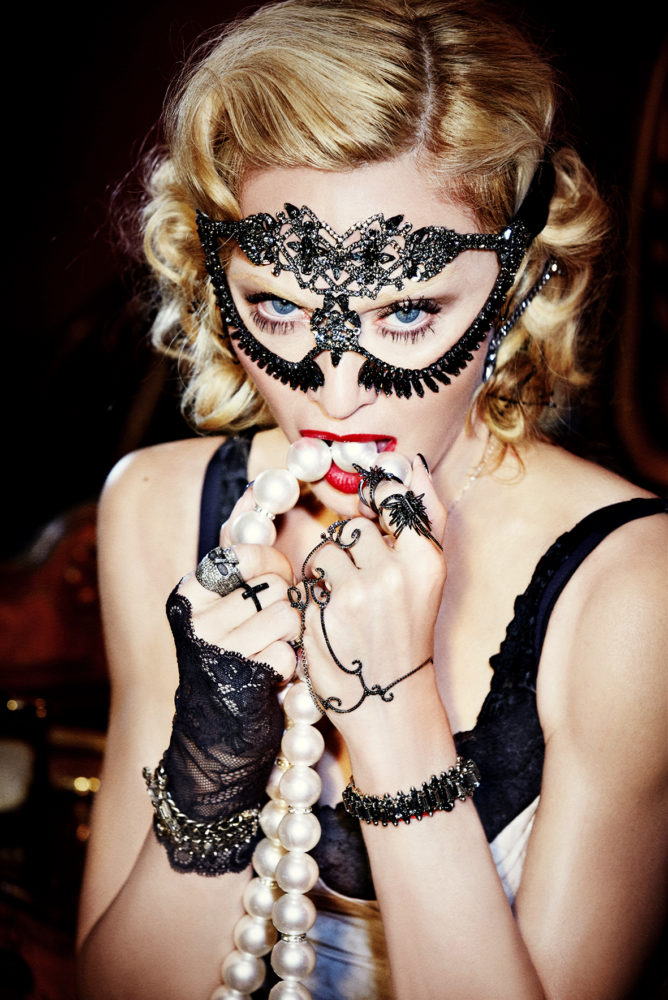
Ellen von Unwerth, “Madonna,” New York, 2015, courtesy of Ellen von Unwerth.
WW: Have you shot anyone recently that’s unforgettable?
EVU: I just shot a new singer, Kim Petras, who’s great and super interesting. And then King Princess with Mark Ronson, which was also lovely. Paris Hilton. It’s amazing to shoot Rihanna, but I also shot her when she was very young—at 16, when she was first starting. So, it’s still so great to shoot all these new people. It always keeps changing.
WW: Do you feel the photography industry is changing and catching up to the feminist approach you’ve had for so long?
EVU: My feminist approach was, “You’re a woman. I love your personality. You’re proud of who you are, and you show that in my pictures. You assume your sexuality and your strength.” That’s how I always saw women. There was a lot of that back then, too—so many beautiful fashion images, which were created by a lot of amazing male photographers like Steven Meisel and Peter Lindberg. Now there’s more feminism, yes, but there’s something tough about it. It misses a bit of sensuality. It seems a bit more prudish and a bit more tough. I feel to be feminine doesn’t mean you have to be tough, necessarily. You can just be feminine. You can be vulnerable.
WW: You’ve said that selfies are a sign of those times and that something else will come along. What do you think that might be?
EVU: More film. Moving images. People look more and more on smaller screens, and there’s so much overflow of imagery. To keep people’s interest, there will be more moving images, more inventive techniques, more inventive ideas, hopefully—and not selfies. I find them quite boring, actually.
WW: Your show “Devotion!,” an inaugural exhibition for Fotografiska in New York, featured over three decades’ worth of photos. How was this presented?
EVU: When they first called me, it was for the museum in Stockholm. They asked me to do a retrospective, and I thought, “Oh my god, where am I going to start? So many pictures!” I had the idea, “What’s your favorite theme?” And of course, my favorite theme is women. It’s also time of the woman—how they come out and express themselves. It’s really their time. I thought that this exhibition on women will contribute to that.
Then I worked with the curator in Stockholm to do it in seven parts, seven emotions. Every room would be related to a different emotion that are felt strongly in my pictures. We also painted each room a different color, and we played around with the images to juxtapose them and make it really fun.
Play, gender, power, drama, passion, love, and lust—dividing it like this made it easier to choose the pictures, and the strongest ones that ft into these captions. To pick favorites took a very long time. It was not easy. But then we moved it to New York for the opening of the museum, reduced it a bit, and added a few new pictures, because since then I released my magazine Von.
WW: What type of photography do you hope to be remembered for, or what type of photographer do you hope to be remembered as?
EVU: Empowering women. Making them beautiful, and larger than life.
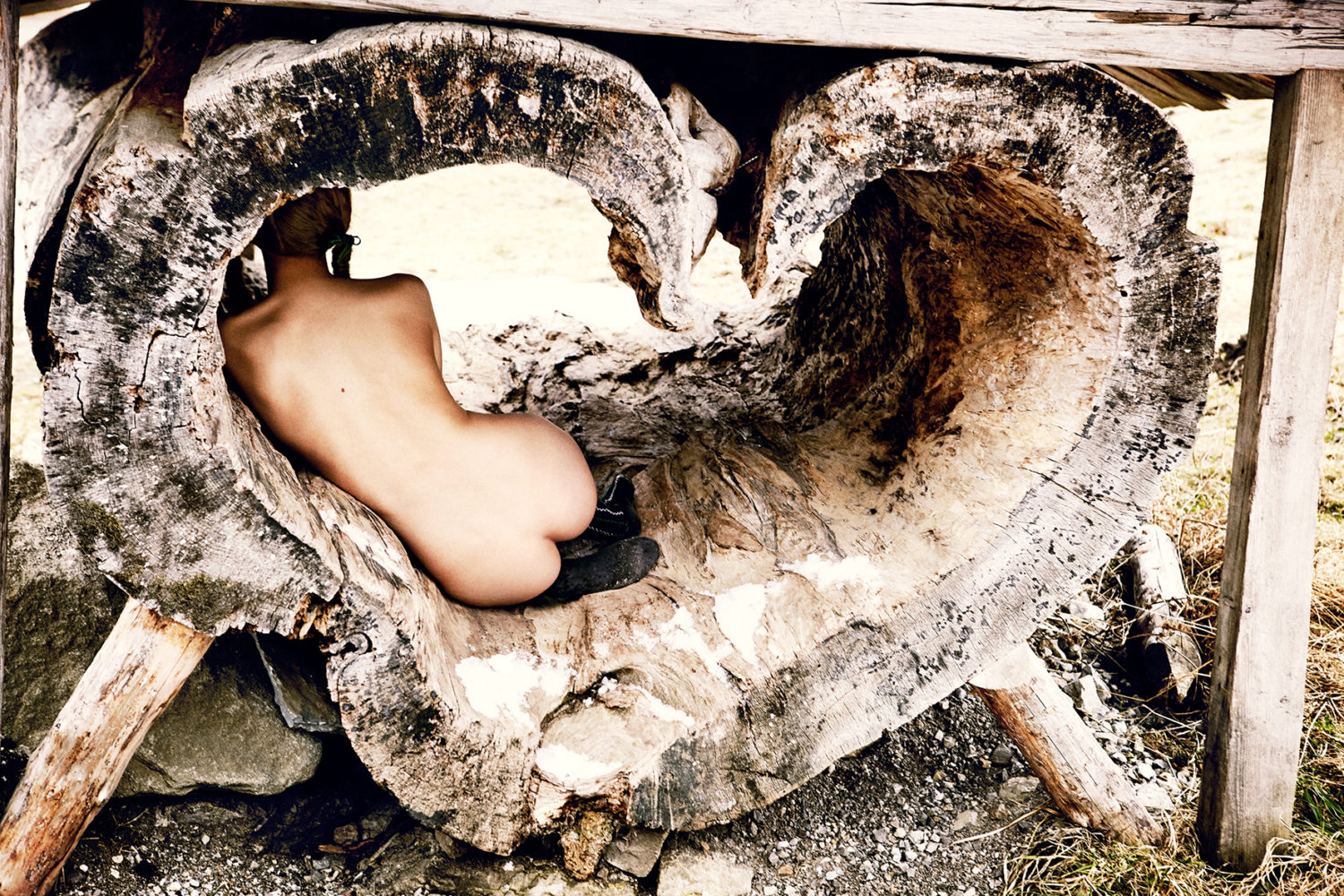
Ellen von Unwerth, “Tree of Love,” Bavaria, 2015 , courtesy of Ellen von Unwerth.



